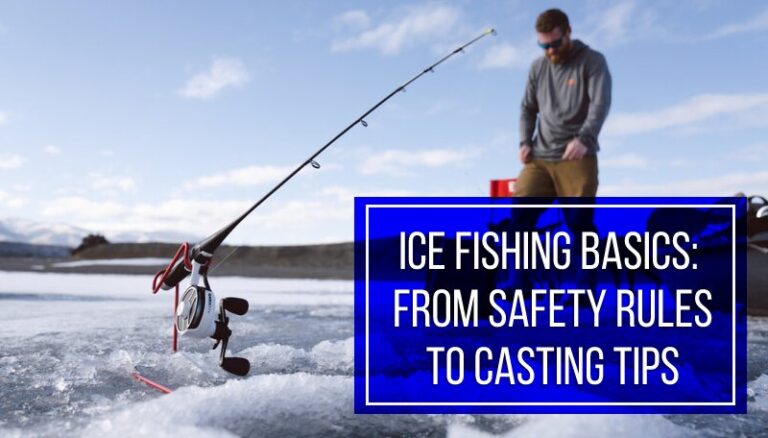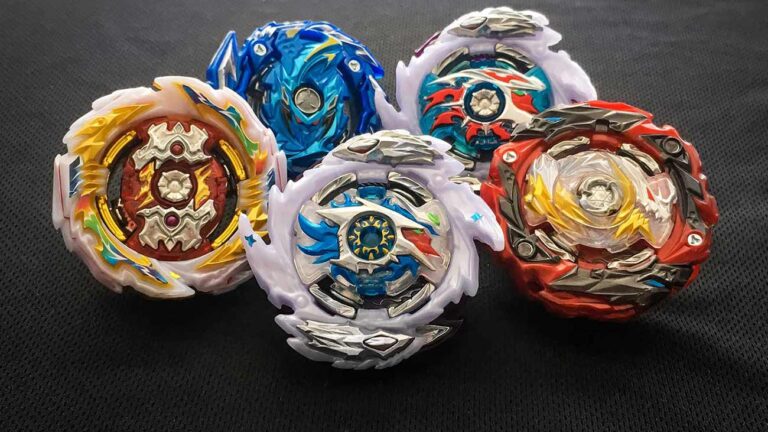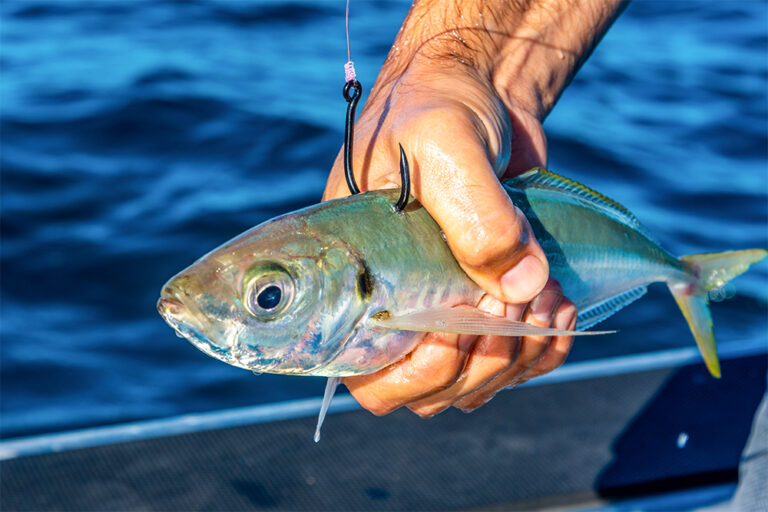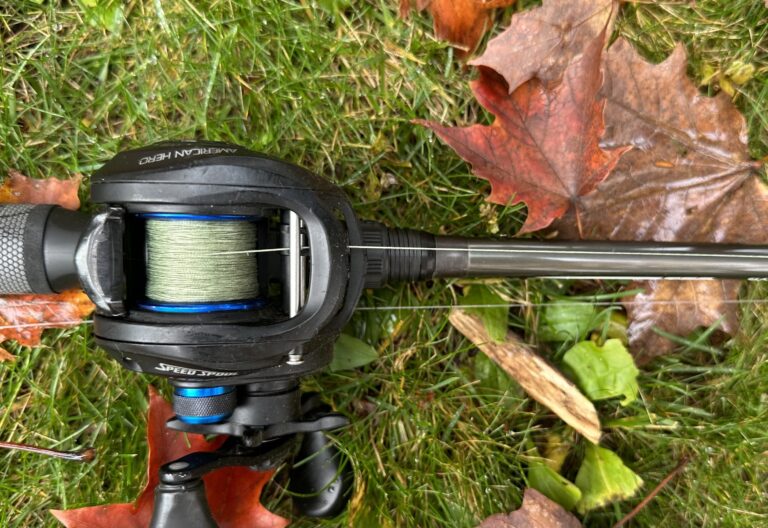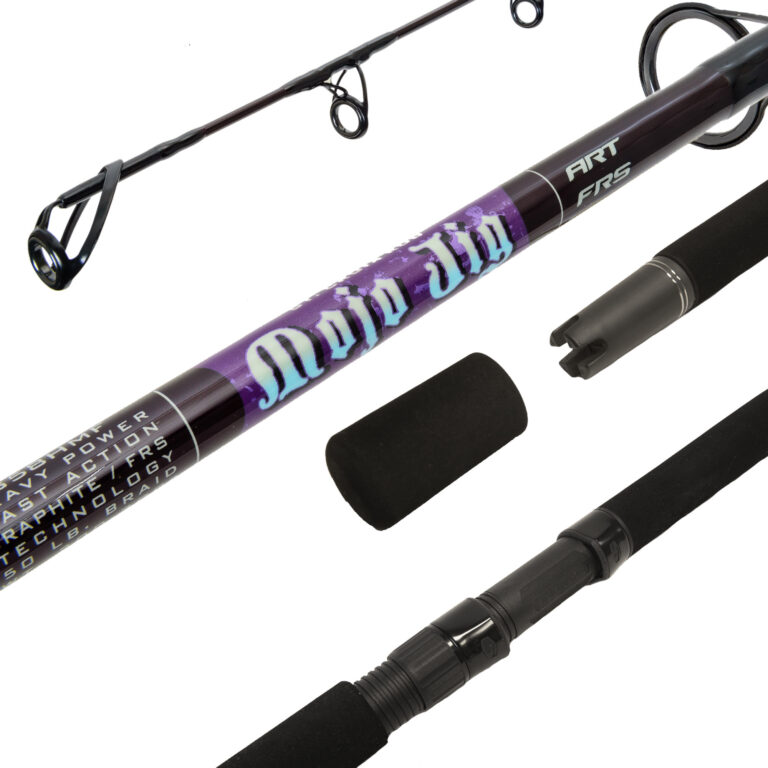A spinning reel is easy to use and best for beginners, while a baitcasting reel offers more control and accuracy for experienced anglers. When selecting a fishing reel, it’s important to understand the differences between a spinning reel and a baitcasting reel.
This will help you determine which one is best suited to your fishing style and preferences. Both reel types have their advantages and drawbacks, and understanding these features will enable you to make an informed decision. We will explore the key differences between spinning reels and baitcasting reels, including their design, operation, and when to use each one.
By the end, you’ll have a clear understanding of which reel is right for you.

Credit: fishingfather.com
Advantages Of Spinning Reels
Spinning reels and baitcasting reels are two popular types of fishing reels that serve different purposes. In this section, we will focus on the advantages of spinning reels and why they are a great choice for many anglers.
Versatility And Ease Of Use
- Spinning reels are known for their versatility. They are suitable for various fishing techniques, such as casting, trolling, and even ice fishing. Whether you’re fishing in freshwater or saltwater, a spinning reel can handle the job.
- One of the reasons anglers prefer spinning reels is their ease of use. They have a simple design with a fixed spool that allows the fishing line to be released with little effort. This makes them beginner-friendly and less prone to backlash and tangling, especially for those new to fishing.
- Spinning reels are equipped with a bail that guides the line onto the spool, providing an added level of control. The bail can be easily opened to cast the line and closed to secure it in place. This feature makes casting with a spinning reel much more straightforward compared to a baitcasting reel.
- Another advantage of spinning reels is their smooth drag system. This mechanism allows you to adjust the resistance of the line being pulled, giving you the ability to handle various sizes of fish.
- The overall design of spinning reels makes them suitable for both right-handed and left-handed anglers. They can be easily switched to accommodate different preferences.
Suitable For Lighter Lures And Lines
- Spinning reels excel when it comes to handling lighter lures and lines. Their design allows for precise control and accuracy when casting lightweight baits, such as small jigs, spinners, and finesse plastics. This makes them a popular choice among finesse anglers and those targeting small game fish.
- The open-faced design of spinning reels also contributes to their ability to handle lighter lines. You can use lines with a lower pound test rating, which provides a more delicate presentation and increased sensitivity. This is particularly advantageous when finesse fishing or targeting species with timid bites, such as trout or panfish.
Ideal For Beginners And Recreational Anglers
- Spinning reels are often recommended for beginners and recreational anglers due to their ease of use and forgiving nature. They require minimal skill to operate and are less likely to result in frustrating backlashes or tangles.
- Beginners can focus on casting and retrieving techniques without worrying too much about the mechanics of the reel. This allows them to enjoy the fishing experience without the added stress of mastering a more complex reel like a baitcasting reel.
- Spinning reels also provide a great learning platform for mastering basic fishing skills. As beginners become more comfortable and proficient, they can gradually transition to more advanced techniques and reel types.
Overall, spinning reels offer versatility, ease of use, and are suitable for lighter lures and lines. They are an ideal choice for beginners and recreational anglers who want to enjoy a hassle-free fishing experience. Whether you’re casting for trout in a peaceful river or targeting bass in a local lake, a spinning reel can be your reliable fishing companion.
Disadvantages Of Spinning Reels
Spinning reels and baitcasting reels are two popular choices for anglers, each offering distinct advantages and disadvantages. In this section, let’s take a closer look at the disadvantages of using spinning reels.
Limited Casting Distance And Accuracy
While spinning reels offer ease of use and versatility, they tend to have limitations when it comes to casting distance and accuracy. Here are the key points to consider:
- Compared to baitcasting reels, spinning reels are designed with a fixed spool that releases the line in a circular motion. This design, although convenient, can result in shorter casting distances.
- The line travels off the spool in a coiled manner, creating friction and resistance which can affect the accuracy of your cast.
- Spinning reels are more prone to wind knots and backlash due to the line twisting and tangling during retrieval.
Potential Line Twist Issues
One of the downsides of spinning reels is the potential for line twist issues. Here’s what you need to know:
- As the line is released from the spinning reel’s spool, it can twist and loop upon retrieval, leading to frustrating tangles.
- The rotation of the line as it unwinds can cause it to wrap around the reel’s bail arm, resulting in line twists that compromise its overall strength and performance.
- This issue is especially prevalent when using certain fishing techniques that involve continuous reeling and frequent line changes.
- To minimize line twist problems, anglers often resort to manual bail management techniques or the use of additional hardware such as line swivels.
Not As Effective For Heavy Baits And Techniques
When it comes to heavy baits and specific fishing techniques, spinning reels may not be the most effective option. Consider the following points:
- Spinning reels are generally designed for lighter to medium-weight lures and lines, making them less suitable for heavy-duty applications.
- These reels may struggle to handle heavier baits and large fish due to their design, which relies on the fixed spool and line release mechanism.
- Baitcasting reels, on the other hand, offer superior control, power, and drag systems, making them a preferred choice for heavy bait presentations and techniques such as flipping, pitching, and trolling.
Spinning reels have their disadvantages, including limited casting distance and accuracy, potential line twist issues, and being less effective for heavy baits and techniques. However, they still remain popular among anglers due to their ease of use and versatility for various fishing scenarios.
Advantages Of Baitcasting Reels
Spinning reels and baitcasting reels are two popular types of fishing reels that serve different purposes. While spinning reels are often favored by beginners for their ease of use, baitcasting reels offer several advantages that make them a favorite among experienced anglers.
In this section, we will explore the advantages of baitcasting reels in more detail.
Superior Casting Distance And Accuracy
Baitcasting reels are known for their superior casting distance and accuracy, which is why they are often preferred for targeting larger fish species and casting in specific spots. Here are some key points to consider:
- Baitcasting reels have a free-spinning spool that allows for greater line control and enables anglers to cast longer distances compared to spinning reels.
- The design of the reel, with the spool sitting perpendicular to the rod, provides better leverage and accuracy in casting.
- Anglers can easily fine-tune their casting by adjusting the spool tension and braking system, allowing for precise and controlled casting.
Enhanced Control For Precision Angling
One of the main advantages of baitcasting reels is the enhanced control they provide, especially when it comes to precision angling techniques. Here are some key points to note:
- Baitcasting reels offer a higher gear ratio, which means anglers can retrieve the line faster and have better control over their lure placement.
- The ability to control the speed of the line retrieve allows for more accurate presentations and manipulation of the lure.
- The thumb braking system on a baitcasting reel allows anglers to apply or release pressure on the spool during the cast, providing better control over the line.
Ability To Handle Heavier Lures And Lines
Baitcasting reels are designed to handle heavier lures and lines, making them suitable for targeting larger fish and fishing in demanding conditions. Here are some key points to consider:
- The construction of baitcasting reels, with a more robust frame and spool, allows them to handle heavier lures with ease.
- Baitcasting reels are capable of accommodating thicker and stronger fishing lines, providing more versatility in fishing scenarios.
- The drag system on baitcasting reels is typically stronger, allowing anglers to confidently fight and land larger fish.
While spinning reels have their advantages, baitcasting reels offer superior casting distance and accuracy, enhanced control for precision angling, and the ability to handle heavier lures and lines. These advantages make baitcasting reels the preferred choice for experienced anglers looking to perfect their techniques and target bigger fish.
So, if you’re ready to take your fishing game to the next level, it might be time to give baitcasting reels a try!
Disadvantages Of Baitcasting Reels
Baitcasting reels are a popular choice among experienced anglers due to their versatility and ability to handle heavier lines and lures with precision. However, they do come with their fair share of disadvantages compared to spinning reels. In this section, we will explore the drawbacks of using baitcasting reels.
Steeper Learning Curve For Beginners
Baitcasting reels require a certain level of skill and experience to operate effectively. Unlike spinning reels, which are known for their simplicity and ease of use, baitcasting reels demand more practice and technique. Here are some key points to consider:
- Baitcasting reels require careful thumb control to prevent backlash or bird’s nest tangles.
- Beginners may find it challenging to achieve accurate casting distances initially.
- Mastering the application of brakes and adjusting spool tension takes time and practice.
- Learning how to properly handle and cast using a baitcasting reel can be frustrating for novices.
Potential Backlash And Line Tangling
One of the most common issues with using baitcasting reels is the possibility of backlash and line tangling. This occurs when the spool spins faster than the line can release, resulting in a tangled mess. Here are a few things to keep in mind:
- Backlash can happen if the spool tension or braking system is not properly set.
- Casting into the wind or using lures that are too light can increase the chances of a backlash.
- Untangling a backlash can be time-consuming and may require cutting the line, leading to wastage.
- Line tangling can reduce efficiency and decrease the overall enjoyment of fishing.
Higher Cost And Maintenance Requirements
Compared to spinning reels, baitcasting reels tend to have a higher price tag and require more maintenance. Consider the following points:
- Baitcasting reels often cost more due to their complex design and additional features.
- Regular maintenance is crucial for optimal performance, including cleaning and lubricating the reel.
- The intricate internal mechanisms of baitcasting reels may require occasional professional servicing.
- Upgrading or repairing parts of a baitcasting reel can be quite expensive, especially for higher-end models.
By understanding these disadvantages, you can make an informed decision on whether a baitcasting reel is the right choice for your fishing style and skill level. Keep in mind that with practice and experience, many anglers find baitcasting reels to be highly effective tools on the water.
Fishing Style And Target Species
Spinning reels and baitcasting reels are two popular choices among anglers, each offering its own set of advantages and disadvantages. When deciding between the two, it’s important to consider factors such as fishing style and target species. Let’s delve into the differences between spinning reels and baitcasting reels in terms of these aspects.
Freshwater Vs. Saltwater Fishing
- Spinning reels:
- Ideal for freshwater fishing due to their versatility and ease of use.
- Suitable for beginners and experienced anglers alike, making them a popular choice for recreational fishing in lakes, rivers, and ponds.
- Can handle lighter lines and lures, providing better control when targeting smaller fish species.
- Baitcasting reels:
- Preferred option for saltwater fishing, thanks to their durability and ability to handle heavier lines and lures.
- Designed to withstand the corrosive effects of saltwater, making them a reliable choice in oceanic environments.
- Commonly used for targeting larger and more powerful saltwater species, where strength and casting distance are crucial.
Different Techniques And Baits
- Spinning reels:
- Utilized for various fishing techniques, including casting, trolling, and jigging, offering versatility in bait presentation.
- Well-suited for finesse techniques such as drop shotting, wacky rigging, and shakey heads, allowing for precise bait control.
- Work well with lightweight and finesse baits like soft plastics, spinners, jigs, and live baits.
- Baitcasting reels:
- Primarily used for casting techniques, excelling in accuracy and long-distance casting.
- Preferred reel option for techniques like flipping, pitching, and punching into heavy cover, showcasing their strength and control when maneuvering through obstacles.
- Best matched with heavier baits such as crankbaits, jerkbaits, swimbaits, topwater lures, and larger soft plastic baits.
Ultimately, the choice between a spinning reel and a baitcasting reel depends on your fishing style, target species, and preferences. Whether you’re an avid freshwater angler or a saltwater enthusiast, understanding the distinctions between these two reel types can significantly enhance your fishing experience.
Skill Level And Experience
Spinning Reel Vs. Baitcasting Reel: Skill Level And Experience
Novice Anglers Vs. Advanced Anglers
————————————
Novice anglers:
- Novice anglers, who are relatively new to fishing, often find spinning reels easier to learn and use compared to baitcasting reels.
- Spinning reels are designed with a simple mechanism, making them user-friendly and suitable for beginners.
- Novice anglers can quickly grasp the basics of casting and retrieving without requiring extensive practice or experience.
- Spinning reels offer a forgiving nature, allowing novice anglers to fare well even with less precise casting techniques.
- This type of reel is ideal for anglers who prefer a more straightforward and less complicated setup.
Advanced anglers:
- Advanced anglers, with more experience and skill, often favor baitcasting reels due to their versatility and precision.
- Baitcasting reels allow for greater control over casting distance and accuracy, which is essential for advanced techniques and targeting specific areas.
- Experienced anglers can effectively handle the intricacies of using a baitcasting reel, such as adjusting the drag and controlling the spool.
- Baitcasting reels offer a higher level of customization, with adjustable settings that allow anglers to optimize their equipment for various fishing conditions.
- The advanced features of baitcasting reels make them suitable for anglers seeking an upgrade from spinning reels, as they provide more control and finesse.
Patience for learning and practicing:
————————————
Novice anglers:
- Novice anglers often have a shorter learning curve and require less patience to become proficient with spinning reels.
- Spinning reels are easier to learn and handle, allowing novice anglers to enjoy fishing sooner and with minimal frustration.
- Novice anglers can start fishing with a spinning reel almost immediately without needing to spend much time practicing casting techniques.
Advanced anglers:
- Advanced anglers typically possess the patience and dedication required to master the intricacies of baitcasting reels.
- Learning to use a baitcasting reel effectively takes time and practice, as it involves developing precision and muscle memory.
- Advanced anglers understand that consistent practice and refinement of casting techniques are necessary to achieve optimal results with a baitcasting reel.
- The greater challenge presented by baitcasting reels can be rewarding for advanced anglers who are willing to invest time and effort into improving their skills.
Novice anglers tend to find spinning reels more suitable for their skill level and experience, thanks to their user-friendly design and forgiving nature. On the other hand, advanced anglers often prefer baitcasting reels due to their versatility, precision, and opportunities for customization.
While spinning reels offer a quicker learning curve and require less patience, baitcasting reels reward dedicated anglers with greater control and finesse.
Personal Preference And Comfort
Ergonomics And Grip
When it comes to choosing between a spinning reel and a baitcasting reel, personal preference and comfort play a significant role. One of the essential aspects of consideration is the ergonomics and grip of the reel. Here are a few key points to understand:
- Ergonomics: The design and layout of the fishing reel greatly impact the angler’s overall experience. Some anglers may find spinning reels more comfortable due to their simple and straightforward design. Baitcasting reels, on the other hand, offer a more sophisticated and adjustable setup that can be tailored to individual preferences.
- Grip: The grip of the reel refers to how it feels in your hand while fishing. Spinning reels often have a larger, more ergonomic handle that provides a comfortable and secure grip. This design is particularly beneficial for anglers who spend long hours on the water. Baitcasting reels typically have smaller and more compact handles, which can be a matter of personal preference.
Left-Handed Vs. Right-Handed Anglers
Another important factor to consider when choosing between a spinning reel and a baitcasting reel is whether you are a left-handed or right-handed angler. Here’s what you need to know:
- Left-handed anglers: If you are a left-handed angler, your reel selection may be somewhat limited. While both spinning reels and baitcasting reels are available for left-handed anglers, the options may not be as extensive as those for right-handed anglers. It’s crucial to ensure that the reel you choose is compatible with your dominant hand.
- Right-handed anglers: Right-handed anglers have a wider range of options when it comes to reel selection. Both spinning reels and baitcasting reels are readily available for right-handed anglers. However, it’s still essential to consider your personal preference and comfort when making a final decision.
Remember, the ergonomics and grip of the reel, as well as whether you are left-handed or right-handed, are crucial factors to consider when choosing between a spinning reel and a baitcasting reel. By understanding your personal preferences and comfort levels, you can make an informed decision that enhances your overall fishing experience.
Final Thoughts On Choosing The Ideal Reel
Spinning reels and baitcasting reels are both popular choices among anglers, each with its unique strengths and weaknesses. Understanding these differences can help you make an informed decision when choosing the ideal reel for your fishing needs. In this section, we will discuss the key points to consider and reflect on your personal preferences to ensure you select the right reel for your fishing adventures.
Understanding The Strengths And Weaknesses
- Spinning reels:
- Strengths:
- Easy to use, making them beginner-friendly.
- Provide great casting distance and accuracy for lighter lures.
- Ideal for casting lightweight baits and fishing in open areas.
- Excellent for finesse techniques and live bait presentations.
- Weaknesses:
- May experience line twist and tangles when not properly spooled.
- Limited line capacity, restricting use with heavier lines.
- Less control and precision when compared to baitcasting reels.
- Not suitable for heavy-duty applications such as big game fishing.
- Baitcasting reels:
- Strengths:
- Offer superior control and precision, perfect for anglers who require accuracy.
- Allow for longer and more accurate casts, especially with heavier lures.
- Provide increased line capacity, enabling use with heavier lines and tackling larger species.
- Suitable for various fishing techniques, including flipping, pitching, and casting in tight areas.
- Weaknesses:
- Steeper learning curve, requiring practice and skill to cast accurately.
- More prone to backlash, resulting in tangled messes of fishing line.
- Can be challenging to handle lightweight baits effectively.
- Higher cost compared to spinning reels.
Reflecting Personal Fishing Needs And Preferences
When choosing the ideal reel, it’s essential to consider your personal fishing needs and preferences. Here are some factors to reflect on:
- Fishing style:
- Determine whether you predominantly engage in finesse fishing or heavy-duty applications.
- Consider the techniques you frequently use, such as casting in open areas or close-quarters fishing.
- Assess the size of the targeted species you intend to catch.
- Skill level:
- Evaluate your experience with different reel types.
- A beginner might find spinning reels more manageable, while experienced anglers may prefer the precision of baitcasting reels.
- Budget:
- Consider your budgetary constraints.
- Baitcasting reels are generally pricier than spinning reels due to their advanced features.
- Personal preference:
- Think about your comfort and the feel you prefer when handling a fishing reel.
- Try out both spinning and baitcasting reels to determine which one suits you best.
By understanding the strengths and weaknesses of spinning reels and baitcasting reels, and reflecting on your personal fishing needs and preferences, you can make an informed choice when selecting the ideal reel. Whether you opt for the ease of use and versatility of a spinning reel or the precision and control of a baitcasting reel, finding the perfect match will enhance your fishing experience.
So, hit the water confidently with the reel that aligns with your fishing goals and preferences.
Conclusion
After weighing the pros and cons of both spinning reels and baitcasting reels, it is clear that each has its own unique features and benefits. Spinning reels excel in their ease of use, versatility, and affordability, making them a great option for beginners and casual anglers.
On the other hand, baitcasting reels offer unparalleled casting distance, accuracy, and control, making them the preferred choice of experienced anglers and those targeting bigger fish. Understanding the differences between these two types of reels will help you make an informed decision based on your fishing style, target species, and personal preferences.
Whether you choose a spinning reel or a baitcasting reel, it is crucial to practice and develop your skill to get the most out of your reel. So, assess your needs, do some research, and pick the reel that suits you best – and remember, no matter which reel you choose, the joy of catching that big fish is what truly matters in the end.

